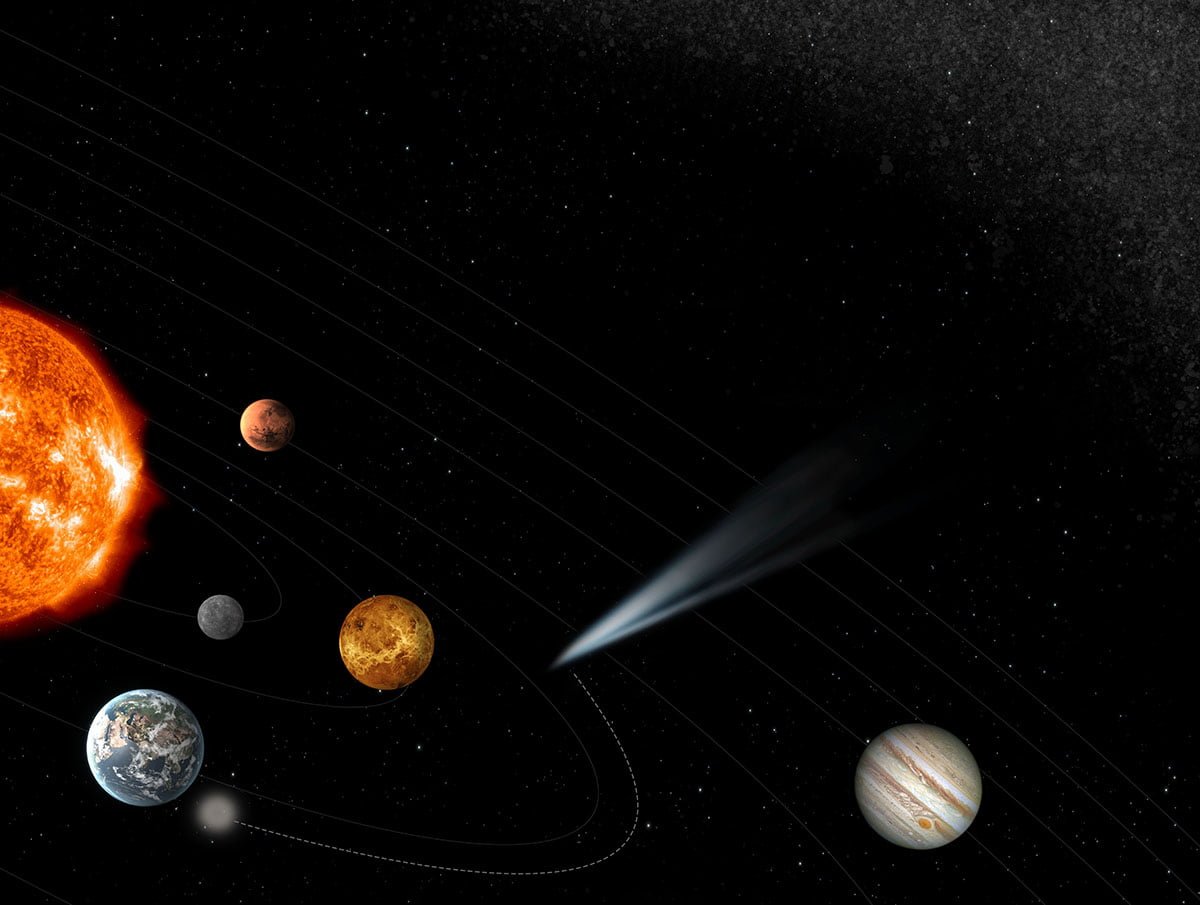After the very successful Rosetta mission, which saw the close encounter with a comet called 67P/Churyumov-Gerasimenko in 2014, ESA has announced a plan for a mission scheduled for launch in 2028, to intercept a comet, the BBC News reported.
As its name and mission objective suggests, the Comet Interceptor will aim to catch onto and research an object that is moving toward the sun from the direction of the outer solar system.
The group of researchers at Mullard Space Science Laboratory in the UK is going to lead the mission, with Geraint Jones from the University College London research center, as the principal investigator.
The design concept so far consists of a probe that has two smaller probes, a mothership and a daughter craft of two. The officials selected the interceptor on Wednesday by the agency’s Science Programme Committee as part of the F-Class series, with “F” standing for fast, while the call for new ideas took place a year ago.
The team’s idea was to launch the mission to intercept comets on the same rocket as ESA’s Ariel space telescope when it launches into space at the end of the next decade. However, it’s worth noting that the observatory won’t occupy the entire rocket, so that some mass and volume are at their disposal for additional equipment.
The telescope will be located at a “gravitational sweetspot” located roughly 93 million miles away from Earth, which is an ideal position for studying distant stars and the planets that orbit them.
The type of comets that will be intercepted are particularly interesting because we usually have a hint at their impending arrival toward the inner solar system a few months before they arrive. Given it’s such a short period of time, scientists wouldn’t normally have enough time to prepare and launch a spacecraft to intercept a comet.
That said, the comet interceptor will be located at the sweetspot and using sky surveys to detect an arriving target. Once it’s identified, the spacecraft will head out to meet it.
That said, the encounter is much different compared to the Rosetta mission. It’s not planned for the mothership spacecraft to orbit the comet, but fly past it. Also, the mission won’t land on it, like Rosetta’s robot Philae did. ESA plans to use the daughter mini-spacecraft probes to see how close they can get to the comet.
“The main spacecraft has the propulsion, the high-gain antenna to talk to Earth, and some instrumentation on it. That passes relatively far from the comet, about 1,000km or so upstream of the nucleus of the object. And then we deploy two cubesat-like probes that go a lot closer and do the high-risk, high-reward observations,” deputy PI Dr Colin Snodgrass, from the University of Edinburgh, told BBC News.





